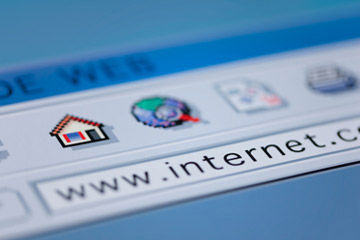How Do I Update My Browser?
- download zone

- Apr 15, 2020
- 2 min read
Updated: Nov 10, 2020
Updating your web browser is very important. Outdated web browsers can present serious security concerns. By running an old web browser, you will likely miss out on useful and interesting new features supported by a newer browser. Many popular websites, such as Gmail and Facebook, no longer support older browsers.

Fortunately, most modern web browsers update themselves automatically so that you always run the latest version. You no longer need to "download and install" the latest version yourself; it will do it for you.
Why should I update my web browser?
It's not something you might normally think about ... but it is actually very important to keep your web browser up to date; we've got some key reasons for it described here: Why should I update my web browser?
The following document covers the steps required to update your browser. Select your browser from the list below and follow the instructions.
Chrome
Google Chrome will be updated automatically as new iterations are released. To verify that your version of Chrome is the latest or to update it manually, follow these steps:
Open the Google Chrome browser.
Click the Customize and control Google Chrome button in the upper-right corner of the screen.
From the drop-down menu that appears, select Help, then select About Google Chrome.
The window that appears will automatically check for updates and show you the current version of Chrome. If an update is available, Chrome will be updated automatically. After Chrome is updated, click the RELAUNCH option to restart Chrome and complete the update.
Microsoft Edge
The Microsoft Edge browser is linked to Windows 10, and so are its updates too. To update the Edge browser, you need to update Windows with the steps below.
Press the Windows Key, type Check for updates, and then press Enter.
Under the Update status section, select Check for updates.
Internet Explorer
Microsoft updates Internet Explorer using its Windows update feature. As long as you regularly install the latest Windows updates from Microsoft, you have the latest version of Internet Explorer.
If you have not enabled Windows Automatic Updates in Windows 8 and earlier versions, you must update Internet Explorer on your computer manually by following these steps: 1. Open the Control Panel.
2. Click on and open the Windows Update utility.
3. In the left navigation pane, click the Check for updates link.
4. You can choose to install all available updates or select the updates you want to install.
Firefox
Mozilla Firefox should automatically download the updates and ask when they will be available to install. To verify that your version of Firefox is the latest or to update it manually, follow these steps:
Open the Mozilla Firefox browser.
Click the Open menu button in the upper-right corner of the screen.
In the menu that appears, click the Help option at the bottom.
Select About Firefox.
The window that appears will automatically check for updates and show you the current version of Firefox. If an update is available, you can click the Update to [version number] button to install the update, where "version-number" is the latest version of Firefox.







Comments